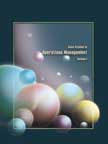Nordstrom's Perpetual Inventory System
|
|
ICMR HOME | Case Studies Collection
Case Details:
Case Code : OPER025
Case Length : 16 Pages
Period : 1994 - 2003
Organization : Nordstrom
Pub Date : 2004
Teaching Note :Not Available
Countries : USA
Retail
To download Nordstrom's Perpetual Inventory System case study
(Case Code: OPER025) click on the button below, and select the case from the list of available cases:

Price:
For delivery in electronic format: Rs. 400;
For delivery through courier (within India): Rs. 400 +Shipping & Handling Charges extra
» Operations Case Studies
» Case Studies Collection
» ICMR HOME
» View Detailed Pricing Info
» How To Order This Case
» Business Case Studies
» Case Studies by Area
» Case Studies by Industry
» Case Studies by Company 
Please note:
This case study was compiled from published sources, and is intended to be used as a basis for class discussion. It is not intended to illustrate either effective or ineffective handling of a management situation. Nor is it a primary information source.
Chat with us

Please leave your feedback

|
|




<< Previous
Inventory 'Mis' Management Contd...
|
Nordstrom sources claimed that the reason behind the lack of a focused inventory
management strategy was that the company relied more on its excellence at
customer service to lure customers than technological tools. Reportedly, the
company believed that it was known across the world for its legendary customer
service initiatives and not because of the way it managed its inventory.
Ironically, leading business magazines BusinessWeek and Forbes blamed
Nordstrom's excessive focus on customer service for its problems. While
BusinessWeek said the company had failed to 'master the science of retailing,'
Forbes reported, "Nordstrom has been slow to upgrade systems because it has
chosen to spend resources on customers."2
|

|
Background Note
Nordstrom had its origins in a small shoe store 'Wallin & Nordstrom' (US)
that began operations in 1901 in Seattle (US). The store was set up by
Sweden's John W. Nordstrom and his friend Carl Wallin from Alaska. The duo
had met in the late 1890s while trying to strike it rich in the Alaskan gold
rush. Later on, they decided to enter into a partnership to put to use the
money they made in Alaska. Since Carl Wallin was experienced in the business
of shoes (he owned a shoe repair shop), they decided to open a shoe store.
|
|
Due to the
duo's focus on offering quality, value-for-money merchandise and
superior customer service, business flourished despite stiff competition
from other local players. As the money poured in, the partners kept
moving the store to bigger and better locations.
The second Wallin & Nordstrom store was opened in 1923. In 1928, John W.
Nordstrom handed over his stake in the business to his sons Elmer and
Everett. The following year, Carl Wallin too sold his stake in the
business to them. In 1933, John W. Nordstrom's third son, Lloyd, joined
Elmer and Everett. The second generation Nordstroms decided to expand
the selection of shoes sold in a major way by adding many new styles,
sizes, colors and brands. |
Over the next three decades, the business survived the Great
Economic Depression and the Second World War, growing at a slow, but healthy
pace. By the beginning of the 1960s, the number of stores had increased to
eight, spread across Washington and Oregon.
Having made its mark in the country's shoe retailing landscape, the company
began looking for avenues to grow further. A decision was taken to enter the
promising apparel business and in 1963, Nordstrom purchased a clothing store,
Best Apparel. This store was refurbished and reopened in February 1965. To
reflect the change in its business model (from selling only shoes to selling
apparel as well), the company renamed the stores 'Nordstrom Best' in 1966. In
the same year, it began offering men's suits, sportswear and children's clothes
as well. By 1968, two more stores were added under the Nordstrom Best label,
bringing the total to a dozen. Nordstrom was generating $57 million every year
in sales by then...
Excerpts >>
|
|










